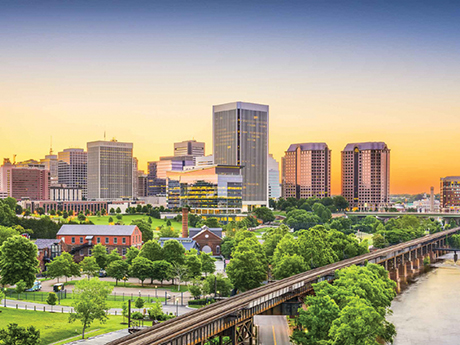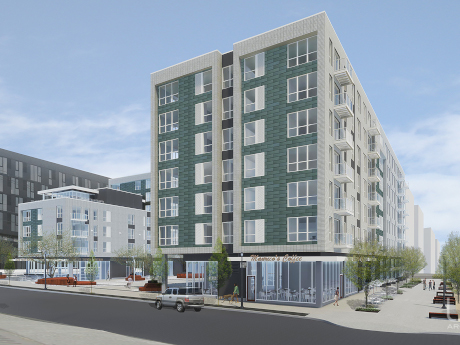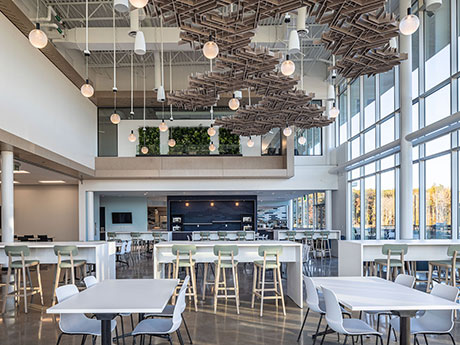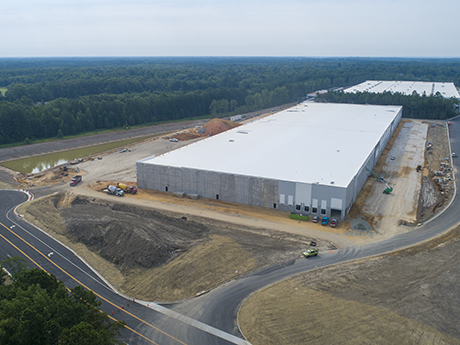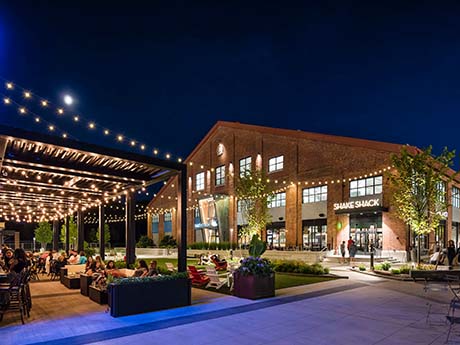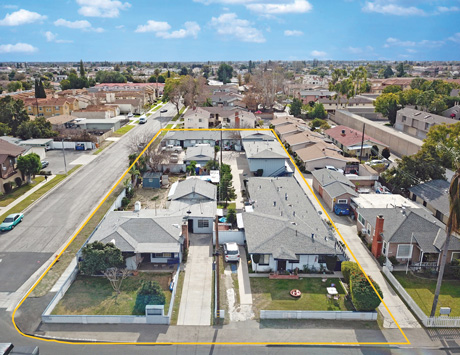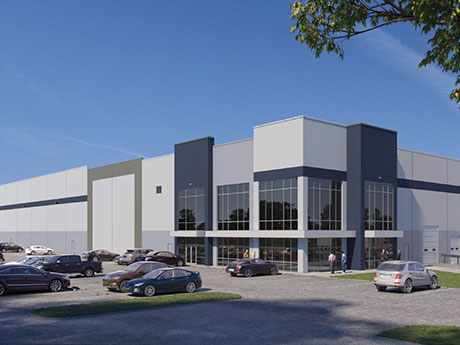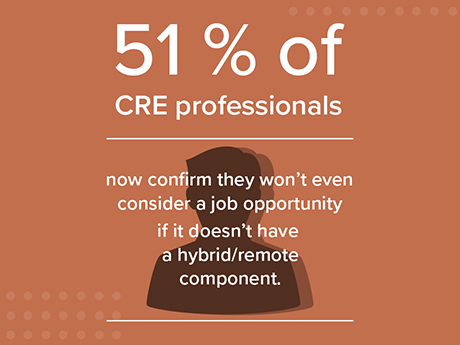Similar to the early stages of the COVID-19 pandemic in 2020, a gap has started forming with price expectations between apartment owners and investors. The price disparity at the start of the pandemic was driven namely by market uncertainty, adjustments to underwriting assumptions and increases to lender and insurance escrow requirements. As the pandemic played out, we saw a mass exodus from denser gateway cities, an influx of government stimulus money and a phasing out of state-specific stay-at-home orders that allowed the economy to open back up. Capital moved away from the retail and hospitality industries hit the hardest, with the multifamily sector reaping the benefit. The second half of 2020 saw a dramatic rise in rents, occupancy and new lease and renewal signings. These trends led to a calming of the debt and capital markets, paving the way for the price gap between buyers and sellers to evaporate as an unprecedented wave of investment flooded into the multifamily space, with 2021 hitting a new high of $213 billion of investment volume, well above the previous peak of $129 billion in 2019, according to Yardi Matrix data. Now midway through 2022, we’re seeing a buyer-seller price gap begin to take …
Market Reports
By Jordan Carter, Executive Vice President, Kidder Mathews Much like the city itself, Portland multifamily owners are no stranger to adversity — whether that refers to the weather, news media or the instability of today’s economy. There’s no doubt the rising interest rate environment will have an impact on the lending market for both refinances and sales in the short-term, but the good news is market fundamentals in the Portland metro remain solid. At 4.53 percent, our vacancy rate sits well below the national average of 4.98 percent, per CoStar. The average apartment rent is now $1,600 per month, thanks to year-over-year rent growth of 8.5 percent, which CoStar projects to remain near 5 percent for the next couple years. New construction, which peaked at nearly 13,000 units in 2018, has slowed dramatically due to legislative and policy changes that have disincentivized developers. These challenges have been magnified by elevated material costs and an arduous permitting process. Year-over-year deliveries of 4,000 units illustrate the dramatic slowdown, as they’re well below the supply needed to meet a demand of more than 10,000 new units annually. The hot single-family home market also continues to push prospective home buyers out of the market. …
By Rob Roe and Jessica Urbin, JLL What does the future of the office in Cleveland look like? While there isn’t one straightforward answer, there’s no doubt that the office of today looks much different than it did five years ago. Though some companies still maintain a traditional office space, the onset of hybrid work has indisputably changed the way many companies use — and choose — their real estate. This adoption of hybrid work has driven the market’s evident transformation. Smaller office spaces As companies adopt hybrid work models, the need for larger office spaces decreases. This doesn’t mean companies are eliminating their office real estate, though. In fact, 60 percent of office workers want to work in a hybrid style today, and 55 percent are doing so already. These downsized spaces support this work model by creating shared spaces, such as cubicles or lockers, as well as incorporating more conference rooms and small team rooms to hold private video calls. They also encourage something employees can’t get at home: in-person collaboration. New spaces are being outfitted with intentional spaces to meet, such as lounge areas, desks in open areas, cafés and more. In addition, having small spaces doesn’t …
By Kyle Knight, senior vice president, Weitzman Houston Houston’s construction of new retail space, after reaching a record low in 2021, is on track to exceed that level, based on projects in the pipeline for this year. But the increase is not large, and total new deliveries will remain on the conservative side. The limited new space is driving demand to existing projects and helping lift marketwide occupancy levels. The limited deliveries of new retail space, combined with healthy retail demand and limited closings, is helping Houston’s retail market build on the occupancy gains it experienced during 2021. As a result, the retail market currently has a healthy occupancy rate of 96.1 percent. The market remains among the strongest in recent memory, although economic issues — rising interest rates, increased construction costs, inflation — may lead to a slowdown. On the positive side, retailer, developer and investor interest remains at extremely high levels, since retail real estate is a long-term game that factors in short-term concerns. The retail market also bolstered by robust demand for small-shop space, new construction that is either built-to-suit or significantly preleased, healthy job and population growth and an economy that benefits from rising energy prices. …
By Kyle Knight, senior vice president, Weitzman Houston Houston’s construction of new retail space, after reaching a record low in 2021, is on track to exceed that level, based on projects in the pipeline for this year. But the increase is not large, and total new deliveries will remain on the conservative side. The limited new space is driving demand to existing projects and helping lift occupancy levels marketwide. The limited deliveries of new retail space, combined with healthy retail demand and limited closings, is helping Houston’s retail market build on the occupancy gains it experienced during 2021. As a result, the retail market currently has a healthy occupancy rate of 96.1 percent. The market remains among the strongest in recent memory, although economic issues — rising interest rates, increased construction costs and inflation — may lead to a slowdown. On the positive side, tenant, developer and investor interest remains extremely high since retail real estate is a long-term game that factors in short-term concerns. The retail market also benefits from several positive influences, including robust demand for small-shop space, new construction that is either built-to-suit or significantly preleased, healthy job and population growth and an economy that is bolstered …
At the mid-year mark, industrial occupancy in the greater Richmond area remains strong, closing with an overall occupancy rate of 98.5 percent in the categories being tracked (Class A, B, select C vacant and investor-owned product with a minimum of 40,000 square feet total RBA). Class A occupancy remained steady at 97 percent at the end of the second quarter. Class B occupancy also remained steady at 94 percent at the end of the first quarter. CoStar Group reports overall industrial occupancy at 96.8 percent for product of all sizes, including investor-owned facilities, but excluding flex space (minimum 50 percent office). There remains a shortage of space in the 25,000- to 50,000-square-foot range as most spec buildings being built are larger single-tenant buildings. Richmond’s strategic Mid-Atlantic location along Interstate 95 provides access to 55 percent of the nation’s consumers within two days’ delivery by truck, and in addition to being the northernmost right to work state on the Eastern seaboard, Virginia has once again been named as the No. 1 state for business by CNBC. Metro Richmond has a civilian labor force of almost 700,000 (1.03 million population) with unemployment rates at 3.7 percent as of June. With 12 Fortune …
By Taylor Williams As an exceptionally dense, compact market that’s only bordered by land on three sides, metro Boston and its brick-and-mortar retail sectors have long been subject to shortages of quality retail space. Even during the height of the pandemic, when some retailers and restaurants went under and sent vacated space back to the market, prime locations were quickly reabsorbed. As it did nationally during the shutdown of the U.S. economy, rent growth in Boston’s retail market subsided temporarily, only to rebound quickly via pent-up demand. Now, the economy is seemingly on the verge of recession, and consumers’ disposable incomes are being severely stretched by 40-year inflationary highs. Yet Boston’s healthy proportion of young people and strong growth in high-paying industries like tech, healthcare and life sciences still have numerous retail users and brokers feeling bullish on the market. But even the most aggressive and well-thought-out expansion plans can fall flat in the absence of good physical space in which to grow. A Tight Market According to data compiled by Newmark, there is roughly 500,000 square feet of pure-play retail space currently under construction throughout the Boston area. While construction timelines are fluid, the full-service real estate firm estimates …
By Pat Swanson, Executive Vice President, Colliers Orange County Lack of supply remains most evident in the Orange County multifamily market, with vacancies trending near historic lows at 2.3 percent. As supply dwindles, we have seen the pressure felt by investors to ramp up and hunt for the elusive value-add opportunities in this marketplace. Many profit hunters actively seek properties with upside in rent, accessory dwelling unit (ADU) potential and inadequacies as part of the existing management. A recent example is a 12-unit, single-story Garden Grove asset on a large parcel of land that was purchased below replacement cost. The Florida-based seller operated and managed the building remotely and desired to move his assets closer to home. Due to the long-distance operations, the local buyer felt they could control the property more efficiently by adding improvements to generate higher rents, while also taking advantage of the open spaces that could accommodate additional ADU units. This was a perfect fit for both parties, and we were able to execute the deal. It shows the type of value-add complex that has become highly sought after. Like the investors who flocked to Garden Grove, similar buyers have reevaluated their wants for quality Class A …
By Alec Pacella, NAI Pleasant Valley The Cleveland industrial market enjoyed a strong first half of 2022, characterized by record-low vacancy rates, brisk new construction and increased rental rates and sales prices. Although the market has made several headlines over the first six months, many of these trends began several years ago and the pandemic only accelerated the activity level amongst several key sectors. Market wide, the average vacancy rate was just over 4 percent at the mid-year mark, which is a slight decrease from the 4.5 percent rate at the end of last year. By most accounts, this is a record-low level and represents a decrease of two full percentage points over the last five years. The most popular submarket, the Southeast, which encompasses favored industrial locations such as Solon, Twinsburg, Streetsboro and Aurora, finished the first half with a slightly higher rate of 4.4 percent. However, this market has also seen significant new construction, including a predominance of speculative projects. The submarket with the lowest vacancy rate is the Southwest, which stretches from Middleburg Heights through Medina, checking in at 3.7 percent. At the other end was the downtown submarket. Characterized by a significant amount of older properties, …
By Kent Elliott, principal, and Chase Fryhover, director, RETS Associates By now, we’re all familiar with the Great Resignation — workers’ mass exodus from their jobs during the pandemic. The phenomenon hit just about every office-using industry, including commercial real estate. In fact, our firm recently conducted a survey of 200 individuals in the industry on job sentiment, which revealed that more than 75 percent of respondents intend to or would consider leaving their current company this year. The trend has affected Texas in a very profound way. According to the Bureau of Labor Statistics, more Texans quit their jobs in September and October 2021 than did workers in any other state. So, what can commercial real estate companies — particularly in the Texas markets — do to maintain a productive and happy workforce and remain competitive in the field? Here are a few recommendations for companies looking to attract and retain talent in the current work environment based on our 20 years of experience as a national recruiting firm for the industry. Be Willing to Bend These days, flexibility is an essential quality at companies where people want to work. This largely began with the pandemic. The business community’s recognition …


